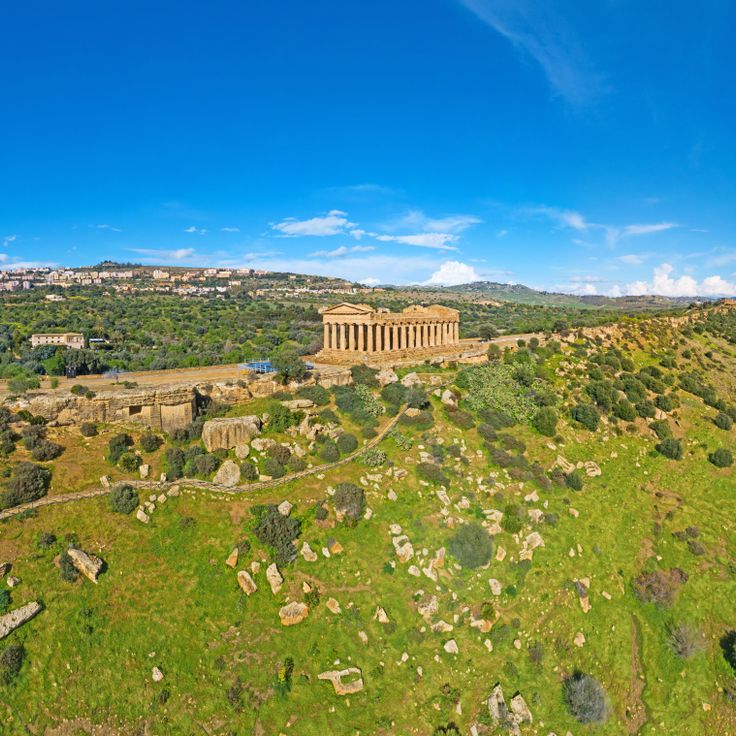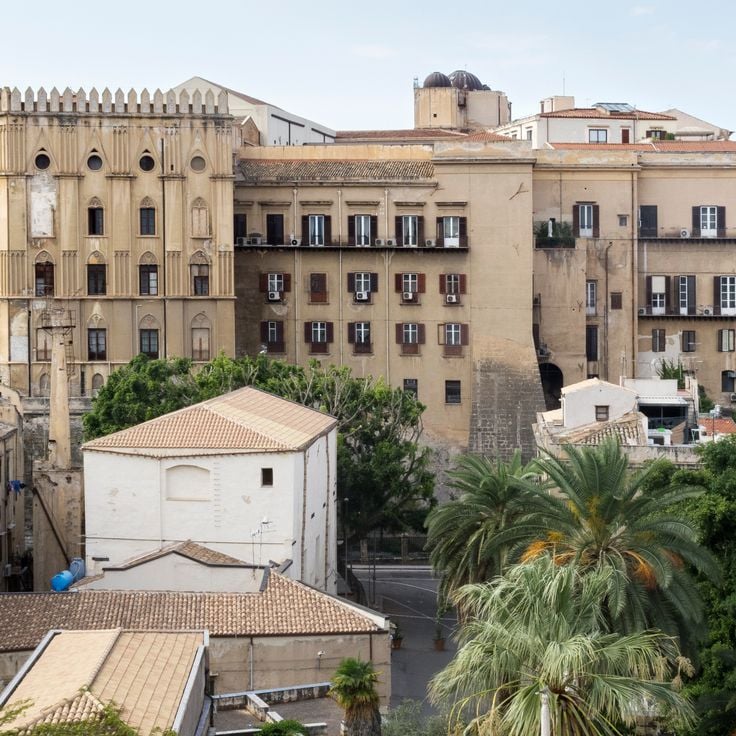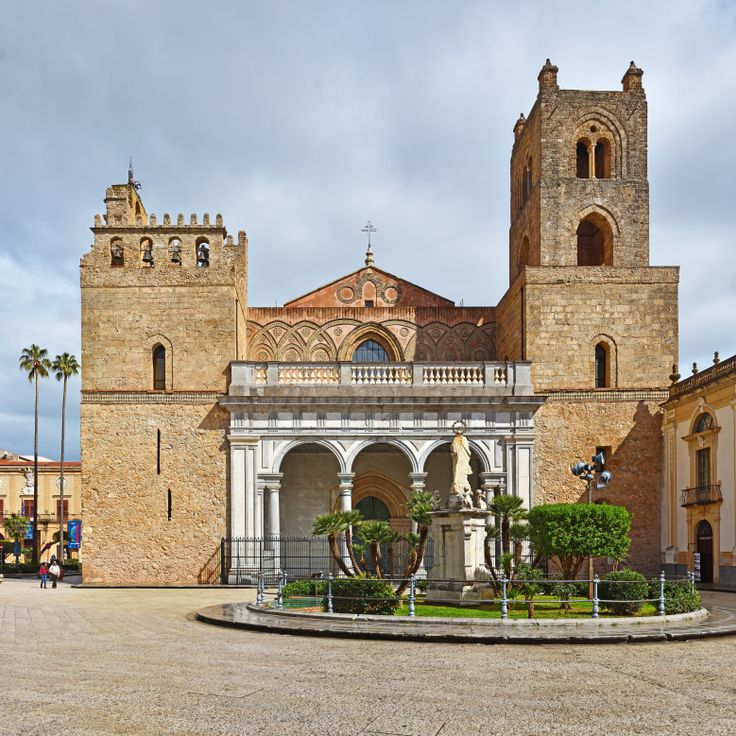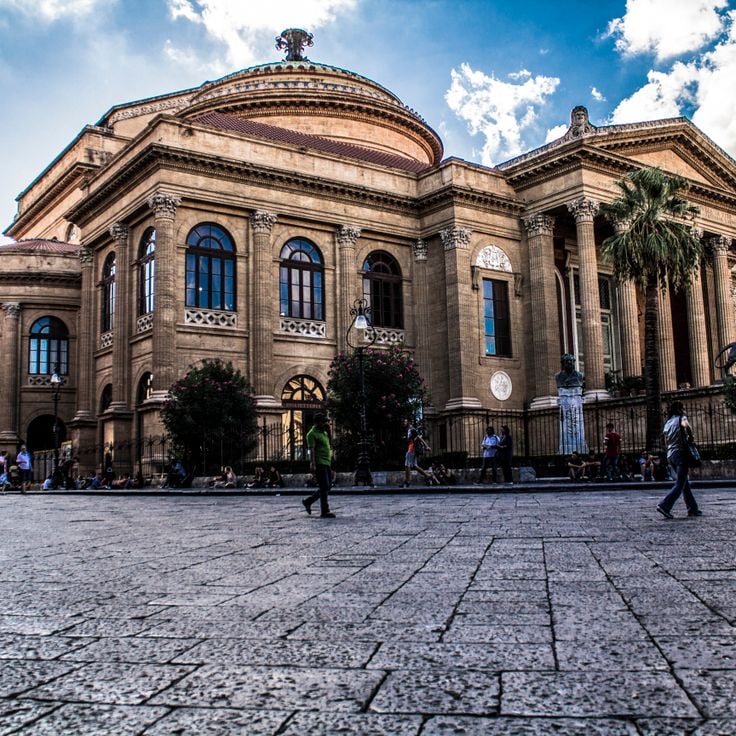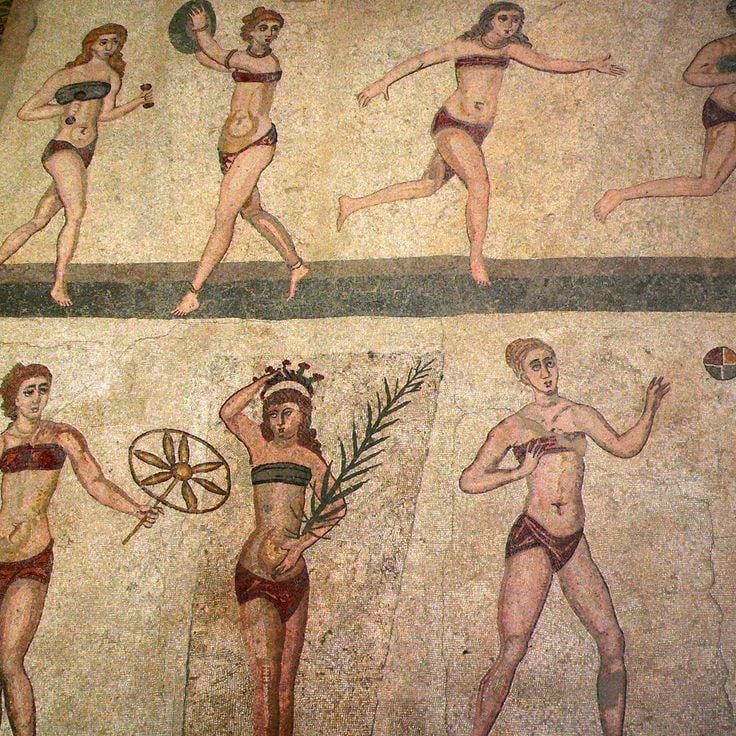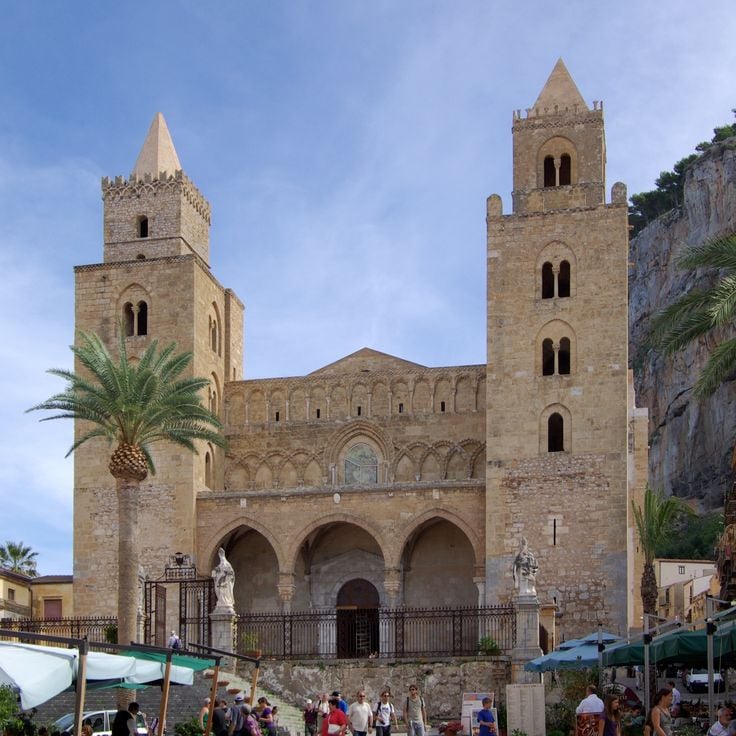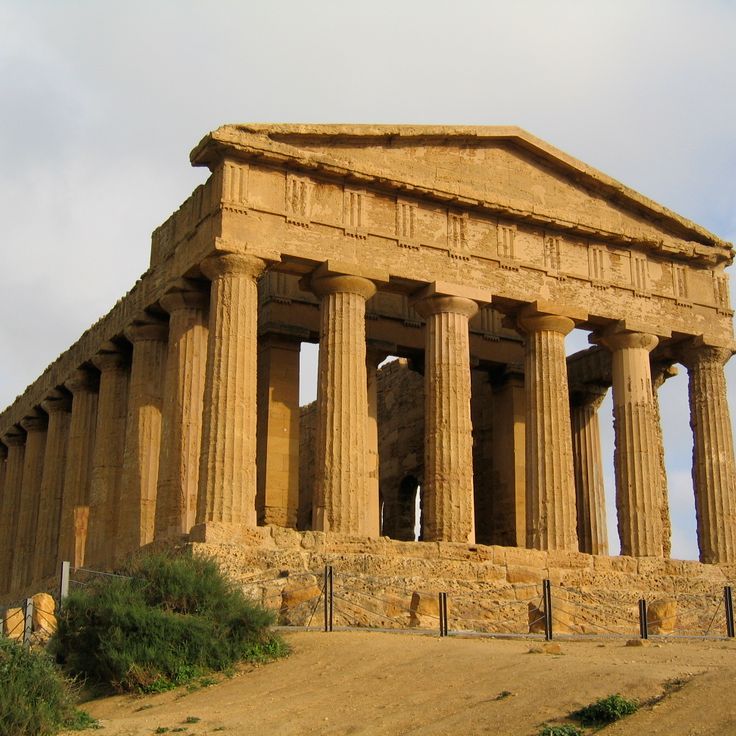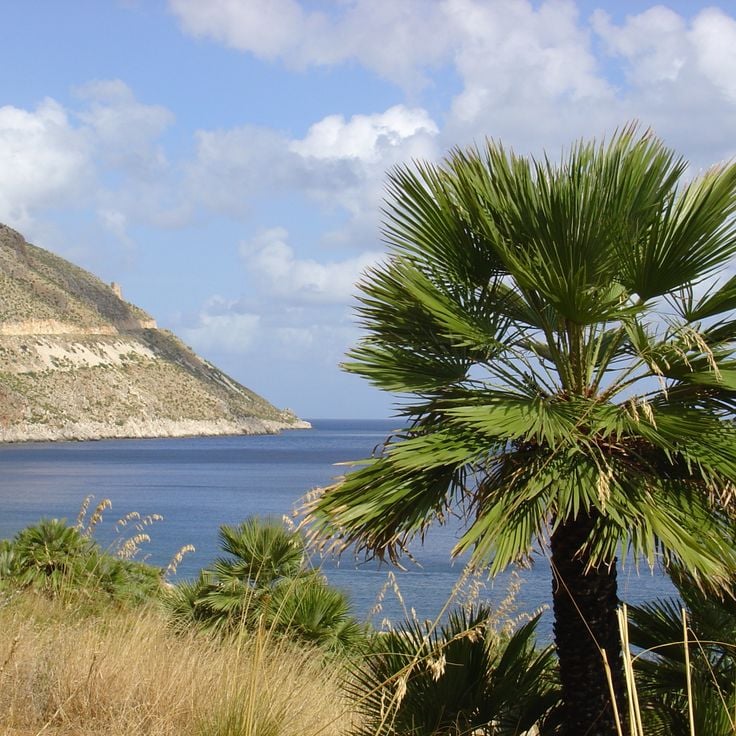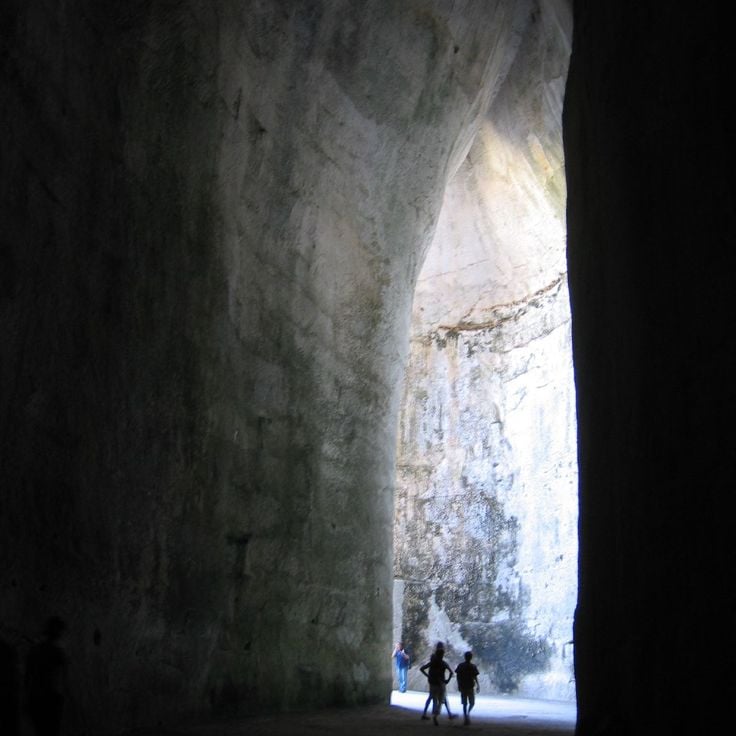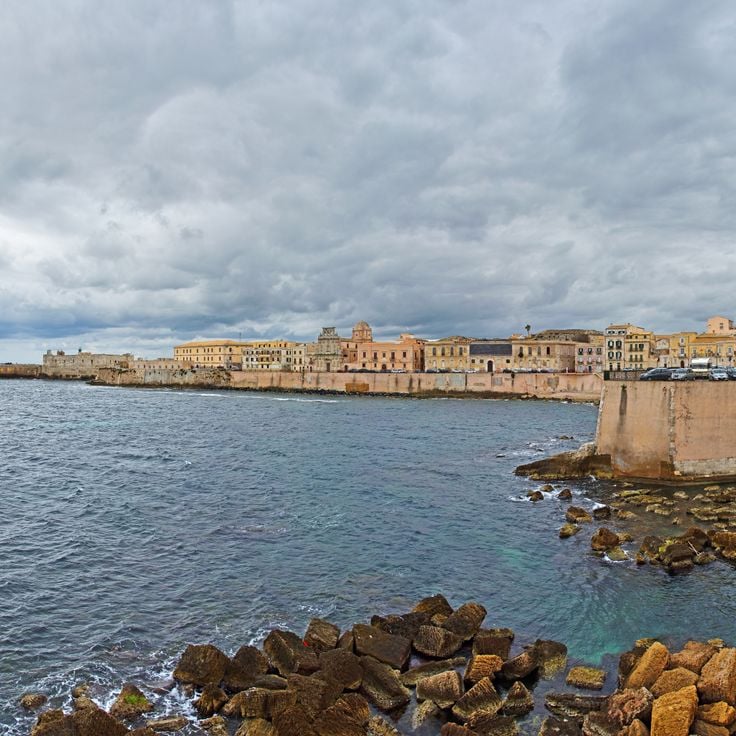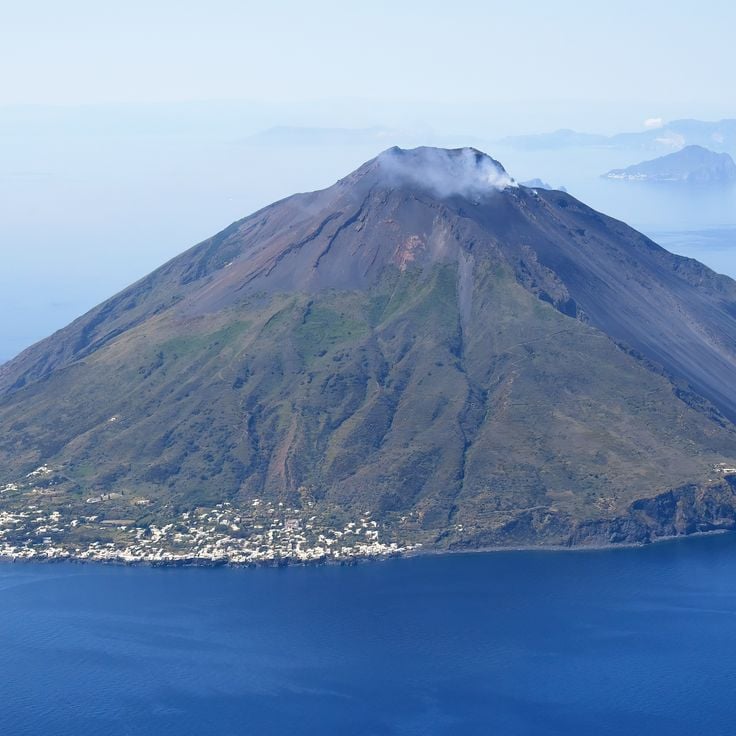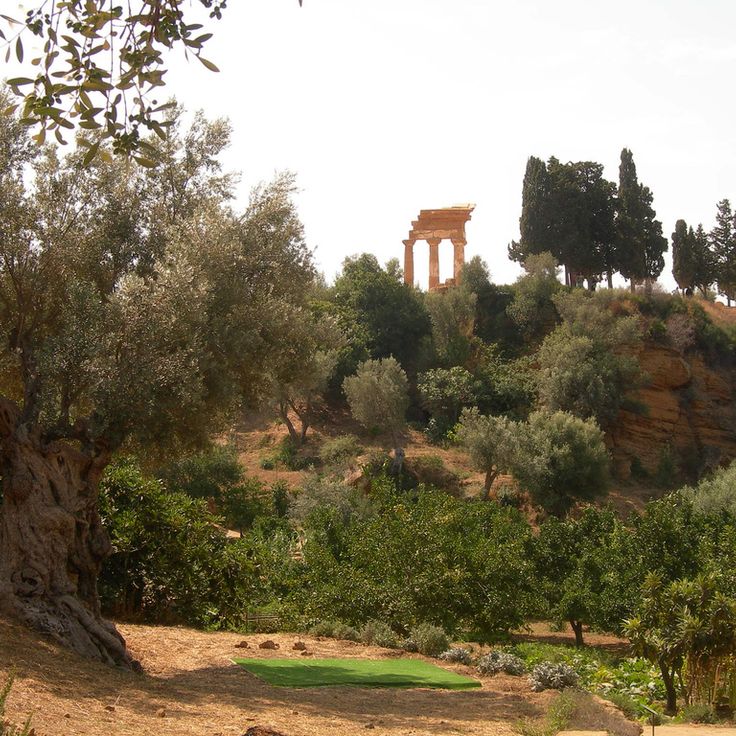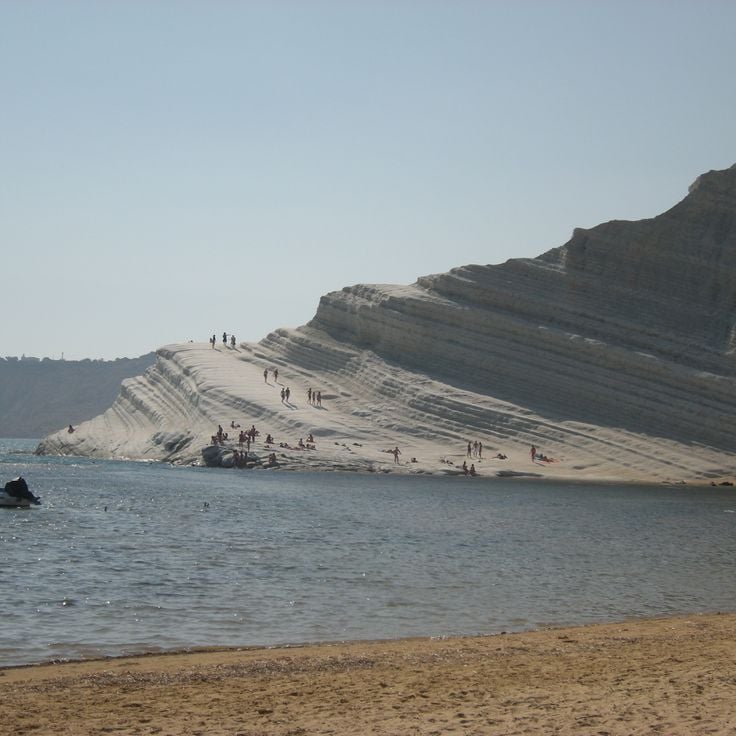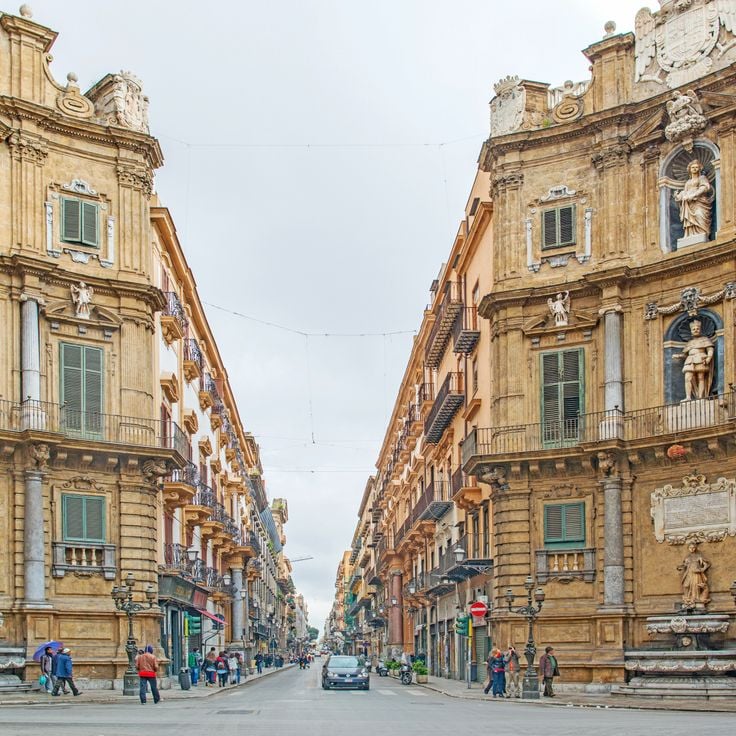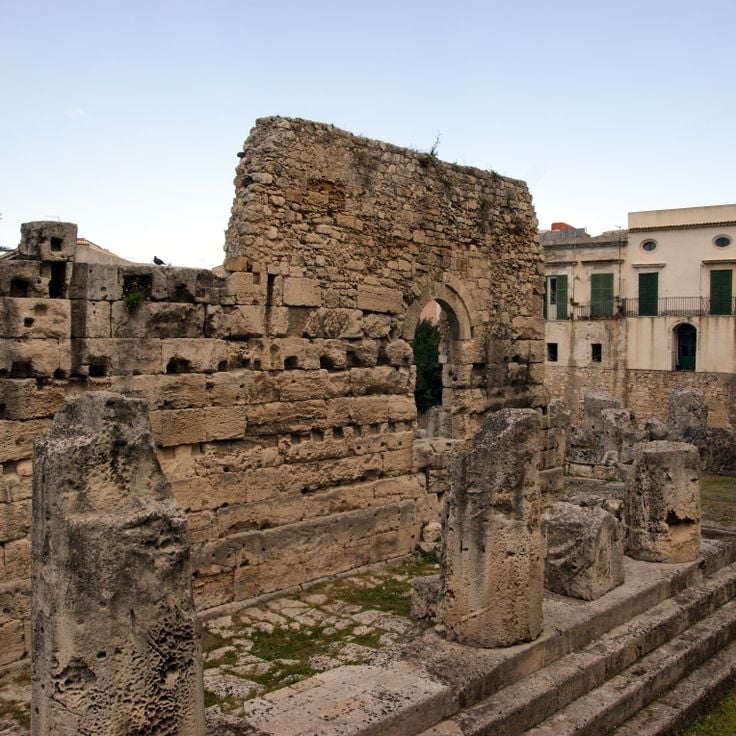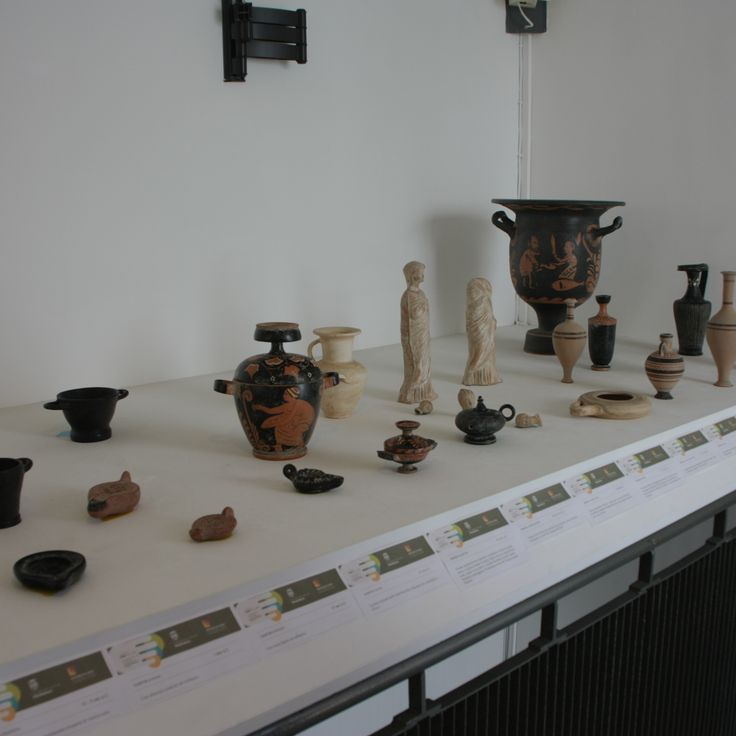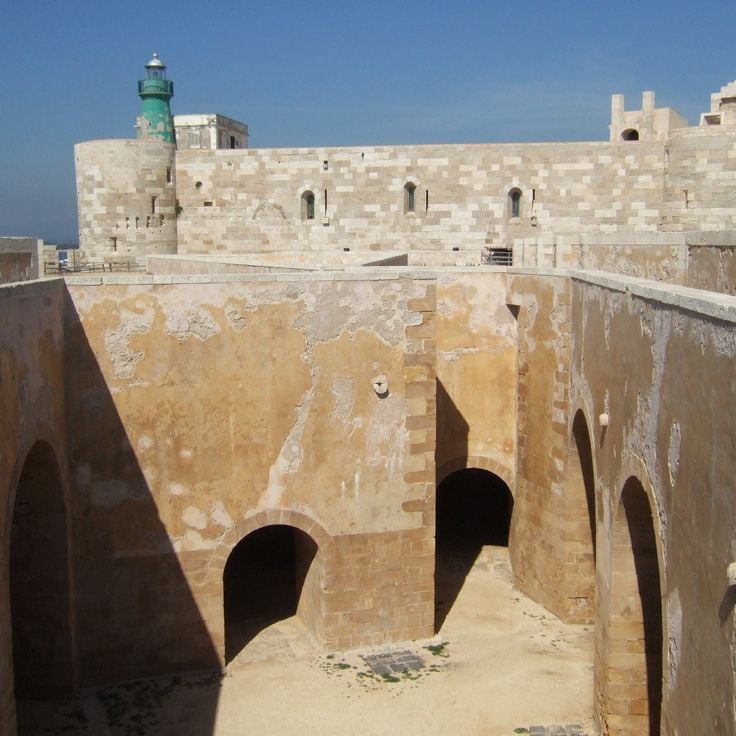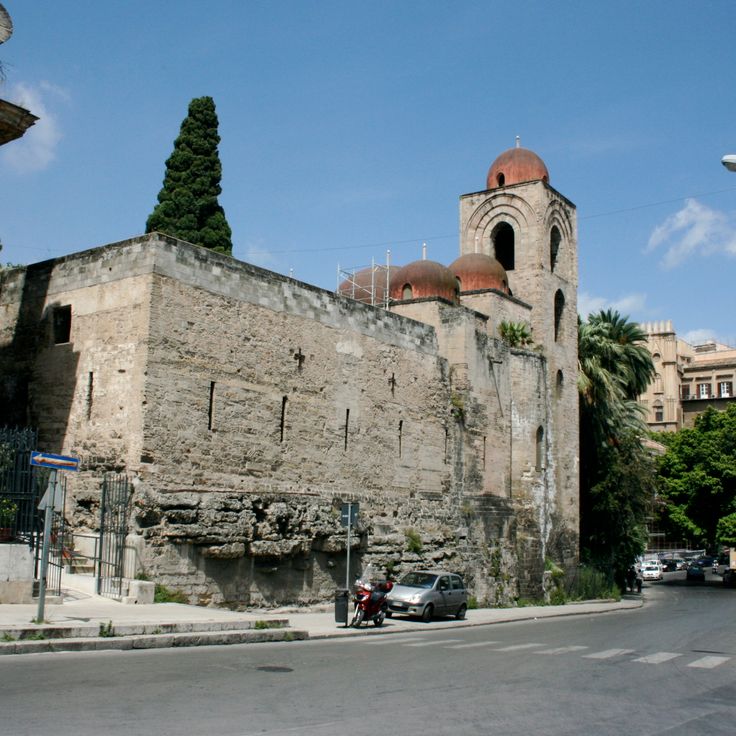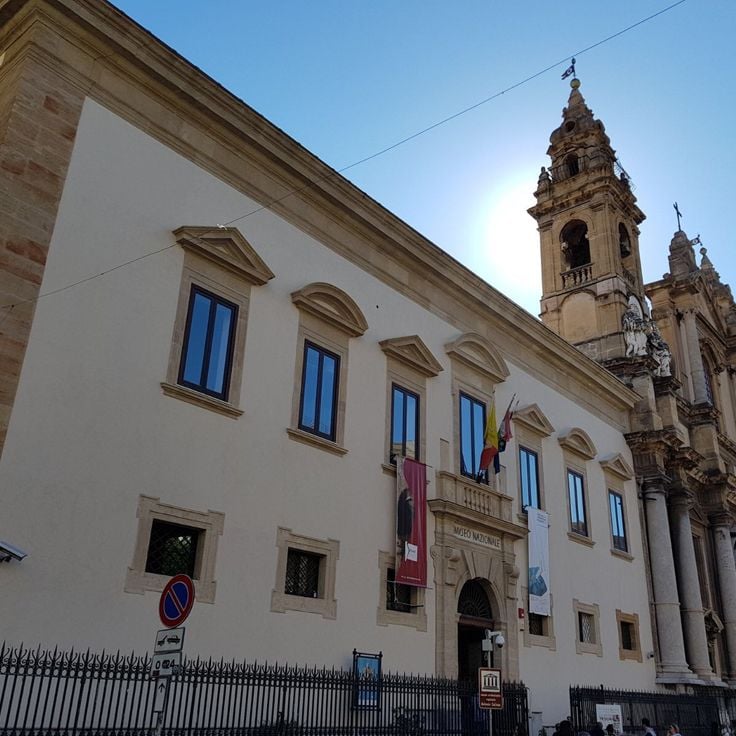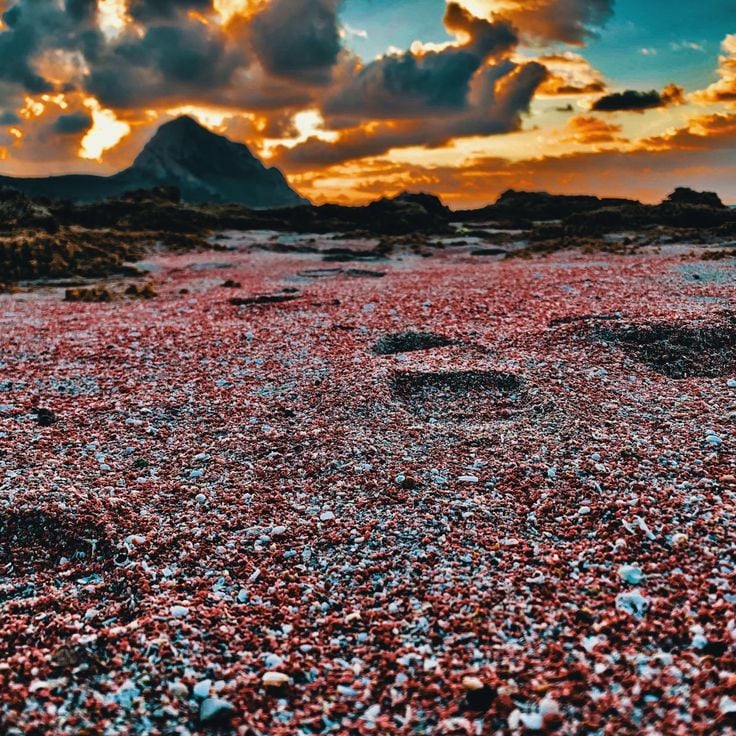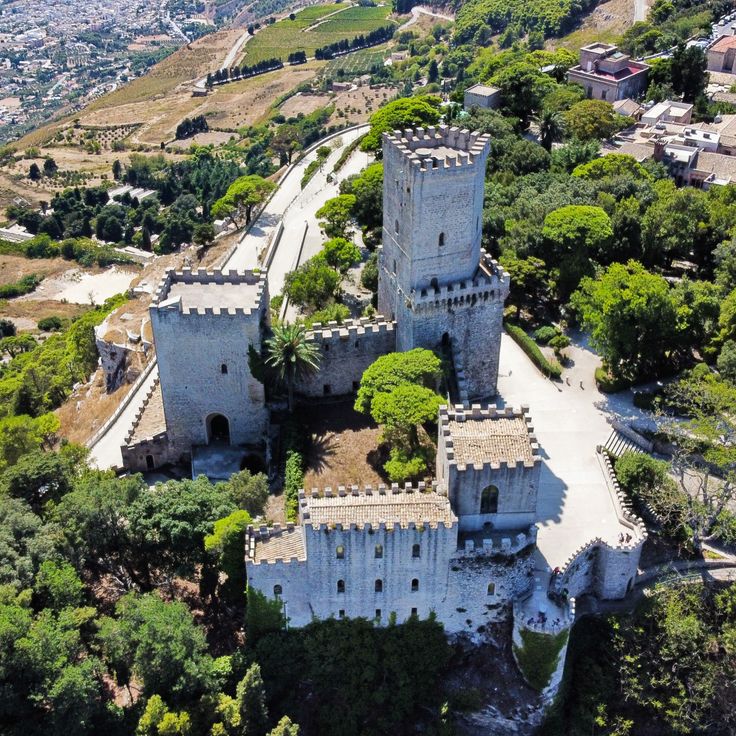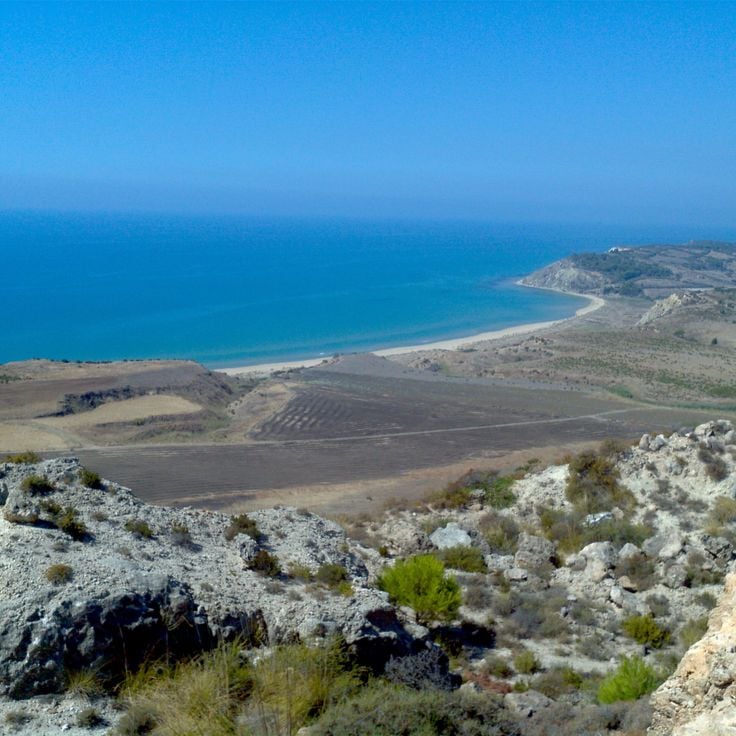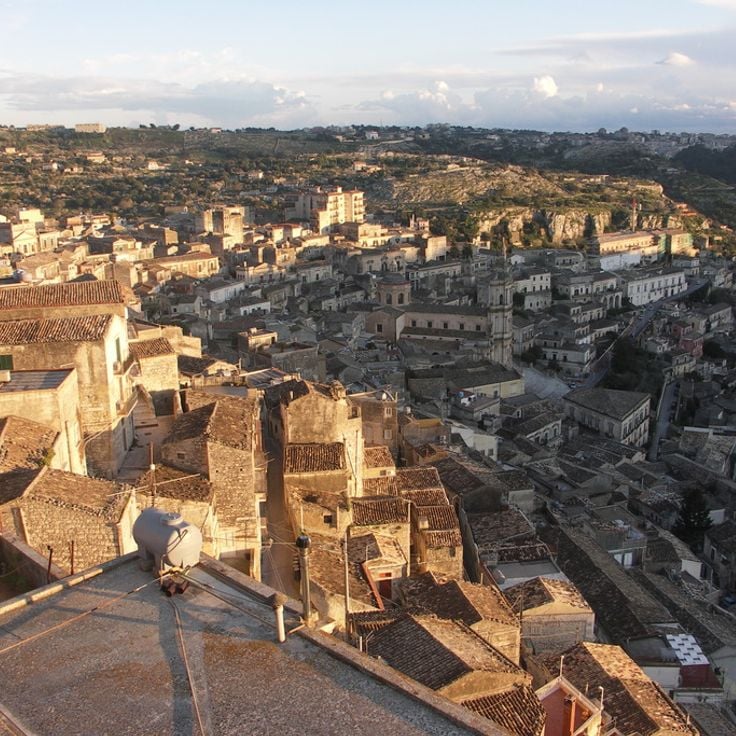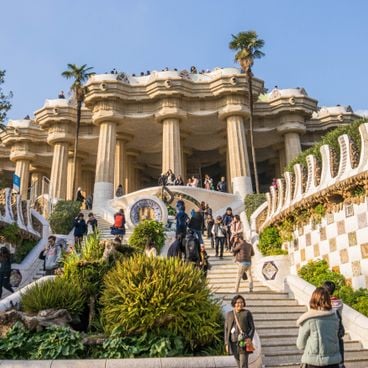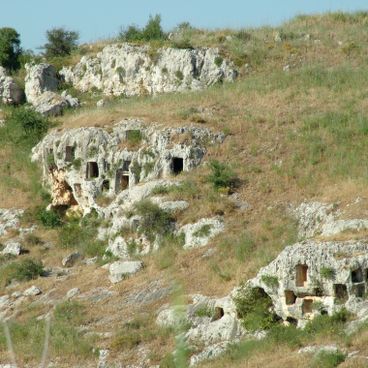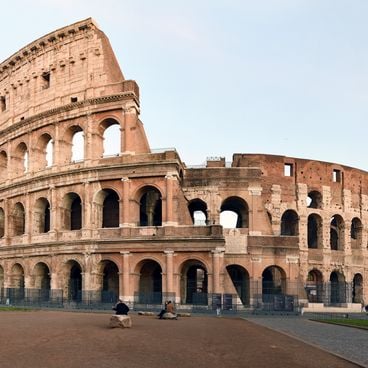Sicily combines Greek temples, Roman mosaics, and Norman churches on an island at the crossroads of Europe and Africa. The archaeological sites document over two thousand years of history, from the Doric columns in Agrigento to the Byzantine domes in Palermo. This collection includes the Temple of Concordia, whose preserved structure ranks among the finest examples of Greek architecture outside Greece, and the Villa Romana del Casale with its extensive fourth-century floor mosaics. The region also offers natural sites such as the active volcano Mount Etna and coastal reserves like Zingaro. Palermo displays multiple eras simultaneously, from the medieval Palazzo dei Normanni to the nineteenth-century Teatro Massimo. Syracuse preserves its ancient past on the island of Ortigia and in the Necropolis of Pantalica, while towns such as Modica and Cefalù present medieval old quarters and Norman cathedrals. The Aeolian Islands complement the mainland with volcanic landscapes and the active Stromboli.
This ancient Greek site extends over 4,265 feet (1,300 meters) and contains eight temples dating from the 5th century BC. The complex displays Doric architecture from the period of Greek colonization in Sicily and ranks among the best preserved Greek temple complexes outside mainland Greece. The temples stand on a ridge south of Agrigento and document the architectural achievements of the ancient Greek settlement of Akragas.
This volcano reaches a height of 10,912 feet (3,326 meters) and displays regular eruptions with lava flows and ash clouds. Mount Etna has shaped the landscape of eastern Sicily for millennia and created fertile soils through its volcanic activity that support viticulture and agriculture.
Palermo Cathedral combines Norman, Arabic and Baroque architectural styles and contains royal tombs from the 12th century. This cathedral unites different architectural influences that reflect Sicily's complex history from Norman rule through Arabic periods to later Baroque modifications. The royal tombs hold the remains of several Norman and Hohenstaufen rulers, including Emperor Frederick II and King Roger II, who were central figures in medieval Sicilian history.
This palace has served as the seat of power in Palermo since the 9th century, combining Arab, Norman and Byzantine architectural elements. The Cappella Palatina inside displays gold mosaics from the 12th century, while the royal apartments provide insight into Norman rule over Sicily. Palazzo dei Normanni now houses the Sicilian Regional Parliament and documents over a thousand years of political history from the Emirate through Italian unification.
This Norman cathedral in Monreale stands as a major example of medieval architecture in Sicily, displaying 6,400 square feet (6,340 square meters) of 12th-century mosaics depicting biblical scenes and saints, crafted from gold tesserae that cover walls and vaults throughout the interior.
This opera house opened in 1897 and seats 1,300 people in a neoclassical building that rises seven stories and stands among the historical sites of Sicily, representing the architectural heritage of the region from the 19th century.
This 4th century Roman villa contains 3,800 square yards (3,500 square meters) of floor mosaics that rank among the best preserved of their kind in the Mediterranean. The mosaics depict hunting scenes, mythological figures and daily life from late antiquity. Villa Romana del Casale documents the wealth and artistic standards of the Roman elite in Sicily and provides insight into the residential culture of this period.
This 12th century cathedral combines Norman architecture with Byzantine elements and displays one of Sicily's most important Christ Pantocrator mosaics. The two massive towers of its western facade dominate the skyline of Cefalù, while the golden mosaics inside document the artistic synthesis that emerged during Norman rule. The church forms part of the UNESCO World Heritage listing of Arab-Norman sites in Sicily.
This Doric temple in the Valley of the Temples stands among the most intact Greek temples worldwide, dating from the 5th century BC. The structure remained largely complete because it was converted into a Christian church during the 6th century. Its 34 columns and fully preserved architrave demonstrate the classical proportions of Greek architecture.
This nature reserve occupies the northwest coast of Sicily and stretches across 4.3 miles (7 kilometers) of undeveloped coastline between San Vito Lo Capo and Scopello. The Zingaro Nature Reserve protects Mediterranean vegetation, limestone cliffs and several accessible coves. Hiking trails connect the beaches and pass through areas with endemic plant species and wildlife.
This limestone cave in the Latomie quarry of Syracuse received its name from the painter Caravaggio, who compared the shape to a human ear. The cave stands 75 feet (23 meters) high and extends 213 feet (65 meters) into the rock. Its acoustics amplify even faint sounds, giving rise to legends that the tyrant Dionysius used it to eavesdrop on prisoners.
This island at the heart of Syracuse connects to the mainland through three bridges and displays the cultural layers of Sicily through preserved Greek temples, Norman church structures and baroque buildings that span from Roman times to the eighteenth century, documenting the region's shifting periods of rule.
This extensive burial site northwest of Syracuse ranks among the most important Bronze Age archaeological complexes in the Mediterranean. The necropolis contains more than 5000 chamber tombs carved into limestone cliff faces between the 13th and 8th centuries BC. The tombs are distributed across five distinct areas along the deep gorges of the Anapo and Calcinara rivers. Archaeological evidence indicates the settlement was abandoned during Greek colonization. The site combines prehistoric burial practices with the dramatic geology of the Monti Iblei and provides insight into early Sicilian history before Greek arrival.
This island in the Tyrrhenian Sea is one of Europe's most active volcanoes. Stromboli rises 3,031 feet (924 meters) above sea level and produces regular eruptions at intervals of 15 to 20 minutes. The island forms part of the Aeolian archipelago and offers opportunities to observe volcanic activity at close range while functioning as an inhabited area with small coastal settlements.
This ancient Greek garden spreads across the valley below the temples of Agrigento and features citrus groves, Mediterranean vegetation and an original irrigation system dating from the 5th century BC. The site combines agricultural tradition with botanical diversity and provides insight into the historical farming methods of the region.
This coastal limestone formation consists of step-like terraces carved by erosion over centuries. The white cliffs rise above the Mediterranean Sea, creating a geologically significant structure near Realmonte. The site documents ongoing coastal erosion processes and provides access to the sea through naturally formed platforms.
Quattro Canti is a 17th-century public square in central Palermo defined by four symmetrical baroque facades at the intersection corners. The architectural design follows a geometric concept with fountains, statues and multi-tiered niche structures representing kings, seasons and patron saints of the city. This urban arrangement marks the historic crossroads of two main streets in the old town.
This 5th century BC Doric temple stands within the Valle dei Templi and displays 34 columns marking the original peripteral sanctuary. The Temple of Hera Lacinia occupies elevated ground and provides insight into Greek architecture in Sicily, contributing to the island's historical heritage of ancient structures and Mediterranean civilizations.
This Greek temple from the 6th century BC on Ortigia island ranks among the oldest surviving Doric temples in Sicily. The monolithic columns and foundation remains document the early Greek presence in Syracuse and illustrate the architectural development of the Doric order in this region.
This city museum in Cefalù presents ancient coins, archaeological finds and the painting Portrait of an Unknown Man by Antonello da Messina. The collection includes Greek and Roman objects as well as natural history exhibits that document Sicily's history from antiquity through the Renaissance.
This 13th century castle stands on a peninsula in Syracuse harbor and displays Norman military architecture with its massive defensive walls, documenting Sicily's Mediterranean defense heritage and the strategic importance of this coastal stronghold through the centuries.
The Garibaldi Theatre in Modica dates from the 19th century and provides seating for 320 people who attend classical operas and contemporary performances. This theater adds to Sicily's historical sites with a cultural venue that showcases the region's performing arts and offers visitors an opportunity to experience the city's active theatrical tradition.
This Norman church in Palermo dates from the 12th century and reflects the Arab influence on Sicilian architecture of the period. Five red domes rise above a rectangular floor plan, while the adjacent cloister encloses a garden planted with citrus trees and palms. The combination of Arab architectural elements with Norman sacred design makes San Giovanni degli Eremiti an important witness to cultural exchange in the medieval Mediterranean.
This museum displays Phoenician statues, Greek vases and Roman mosaics recovered from excavations at archaeological sites throughout Sicily. The collection documents the various cultures that shaped the island over centuries, from early history through the Roman period. Museo Salinas provides a comprehensive overview of the ancient civilizations that settled in this region and left their artistic and religious traditions behind.
This nature reserve extends along the coast northwest of Trapani, protecting Mediterranean vegetation at the base of Mount Cofano. Hiking trails wind through macchia scrubland where native plant species including dwarf palms, mastic shrubs, and wild olive trees grow. The fauna includes raptors, rabbits, and various reptile species. Archaeological remains document human presence since antiquity, including a Punic fortress and caves used as shelter. Coastal sections display limestone cliffs dropping directly into the Tyrrhenian Sea. The reserve demonstrates the natural environment of Sicily before extensive human intervention.
This Norman fortification from the 12th century combines Arab and European architectural elements on a mountain plateau overlooking the sea. The castle stands on the remains of an ancient Temple of Venus and displays the medieval defensive architecture of Sicily. Visitors find battlements, defensive towers and courtyard areas that provide insight into the Norman period of rule. From the walls, views extend across the northwestern coast and inland territory. The site documents the cultural fusion that occurred during the Norman era on the island.
This coastal reserve extends across 6 miles (10 kilometers) along the southern coast and protects sand dunes, rock formations and nesting areas for various Mediterranean bird species. Torre Salsa lies between Siculiana and Eraclea Minoa and includes beach sections separated from the interior by steep slopes. The area serves as a refuge for migratory birds and supports endemic plant species adapted to the saline coastal environment.
This market in Syracuse offers Sicilian specialties including fresh fish, seafood, fruits, vegetables and regional products from local producers, representing the culinary traditions of the island within this guide to historical sites.
This old town was rebuilt following the 1693 earthquake and displays baroque facades, stone churches and noble palaces. The streets of Modica rise in terraces up the hillside, with several churches and residential buildings documenting the rebirth of Sicily during the 18th century. The architecture combines local construction techniques with baroque design principles of the period.
